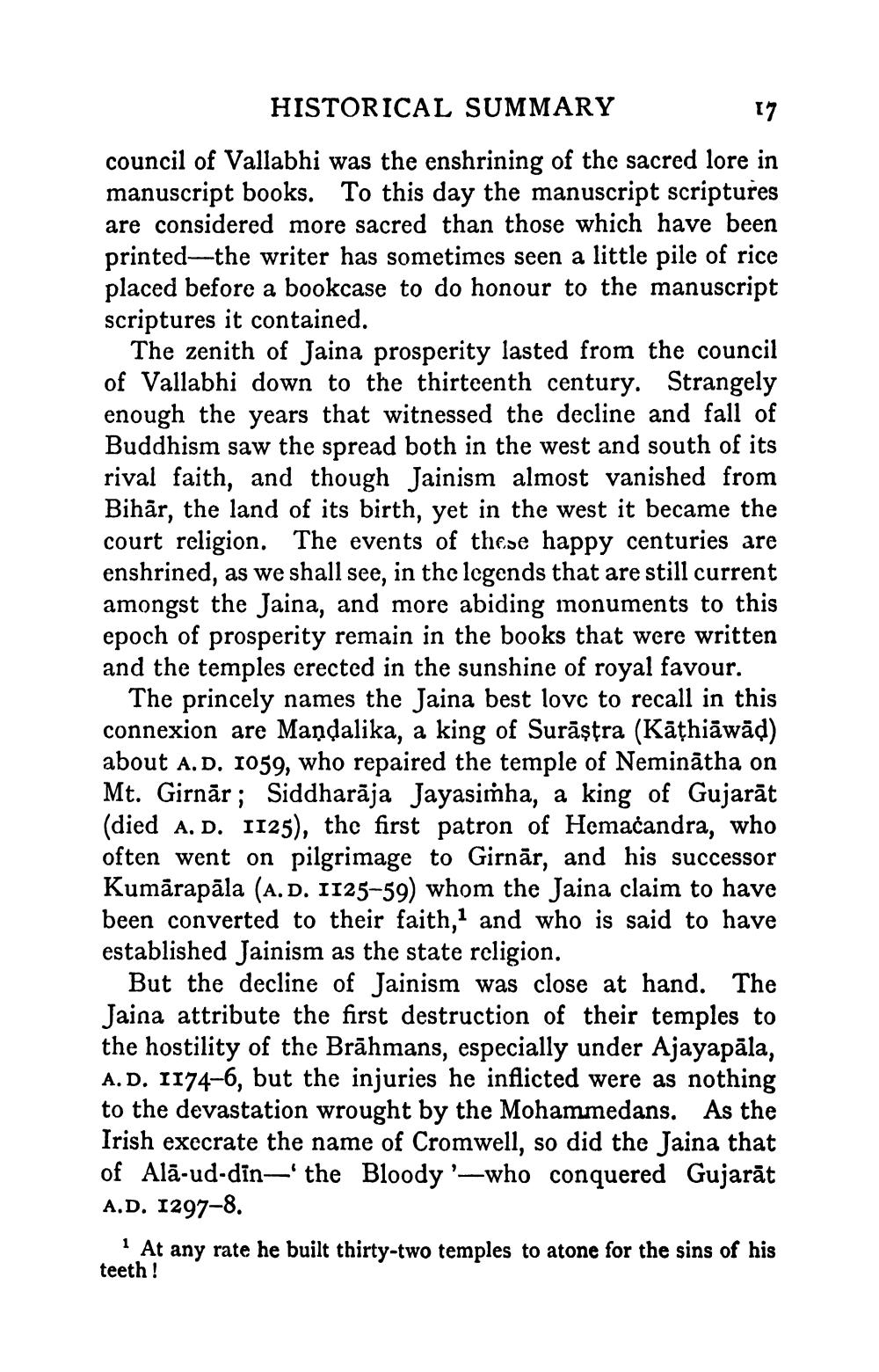________________
HISTORICAL SUMMARY
council of Vallabhi was the enshrining of the sacred lore in manuscript books. To this day the manuscript scriptures are considered more sacred than those which have been printed—the writer has sometimes seen a little pile of rice placed before a bookcase to do honour to the manuscript scriptures it contained.
The zenith of Jaina prosperity lasted from the council of Vallabhi down to the thirteenth century. Strangely enough the years that witnessed the decline and fall of Buddhism saw the spread both in the west and south of its rival faith, and though Jainism almost vanished from Bihar, the land of its birth, yet in the west it became the court religion. The events of these happy centuries are enshrined, as we shall see, in the legends that are still current amongst the Jaina, and more abiding monuments to this epoch of prosperity remain in the books that were written and the temples erected in the sunshine of royal favour.
The princely names the Jaina best love to recall in this connexion are Mandalika, a king of Surāştra (Kāțhiāwād) about A.D. 1059, who repaired the temple of Neminātha on Mt. Girnār; Siddharāja Jayasiṁha, a king of Gujarāt (died A. D. 1125), the first patron of Hemacandra, who often went on pilgrimage to Girnār, and his successor Kumārapāla (A.D. 1125-59) whom the Jaina claim to have been converted to their faith, and who is said to have established Jainism as the state religion.
But the decline of Jainism was close at hand. The Jaina attribute the first destruction of their temples to the hostility of the Brāhmans, especially under Ajayapāla, A.D. 1174-6, but the injuries he inflicted were as nothing to the devastation wrought by the Mohammedans. As the Irish execrate the name of Cromwell, so did the Jaina that of Alā-ud-dîn—the Bloody '—who conquered Gujarāt A.D. 1297–8.
At any rate he built thirty-two temples to atone for the sins of his teeth!




